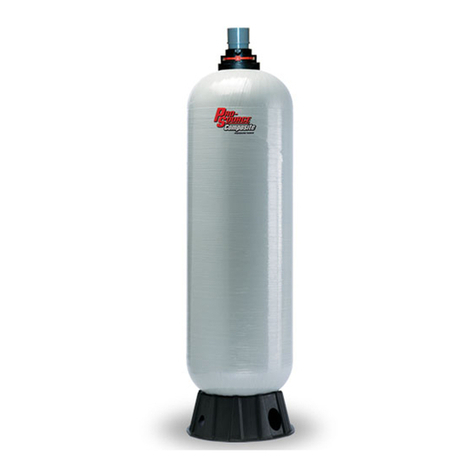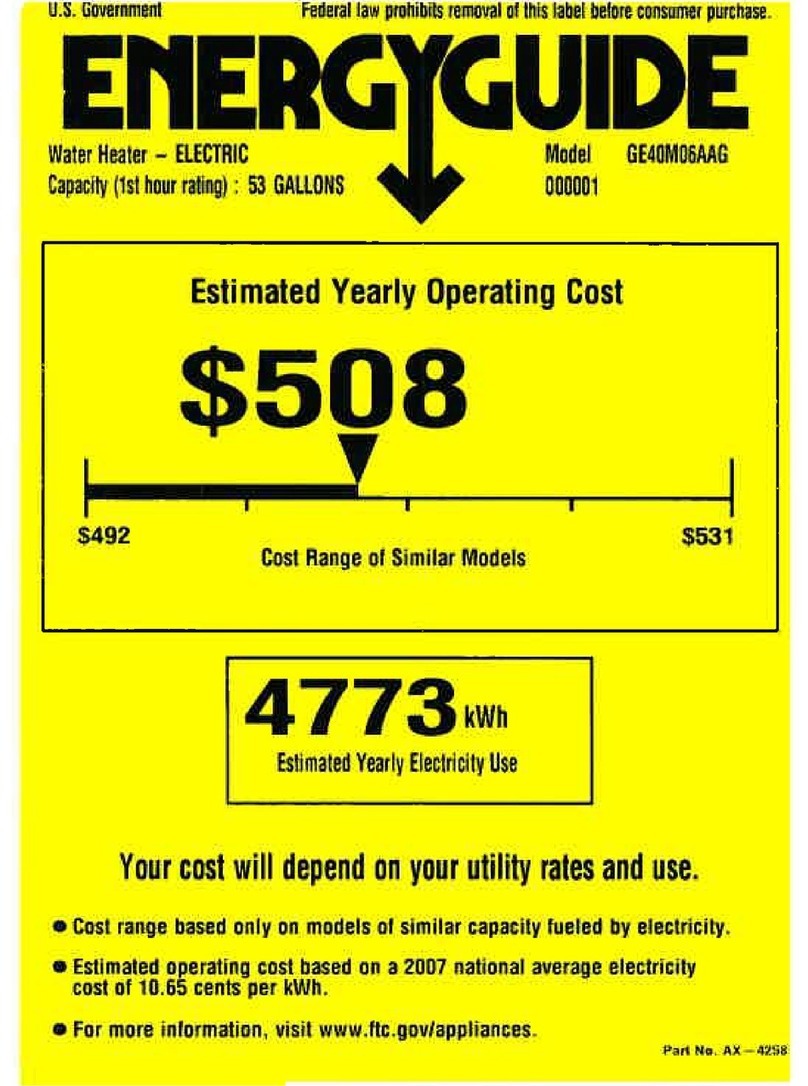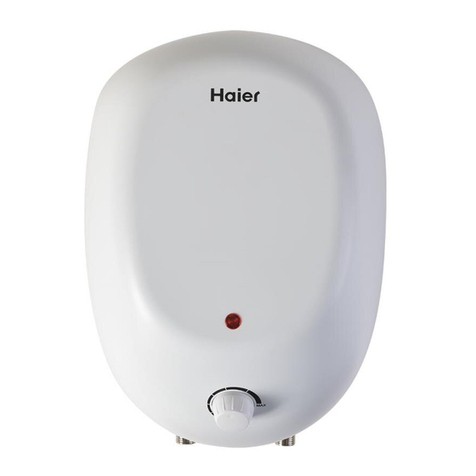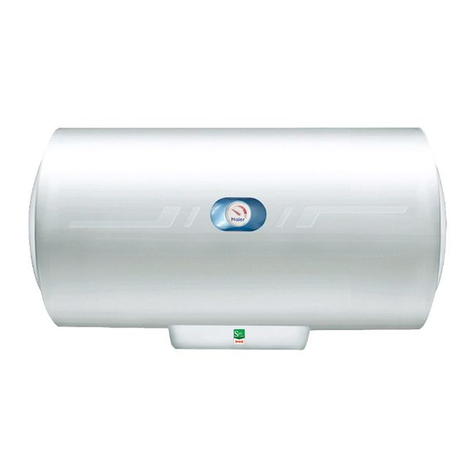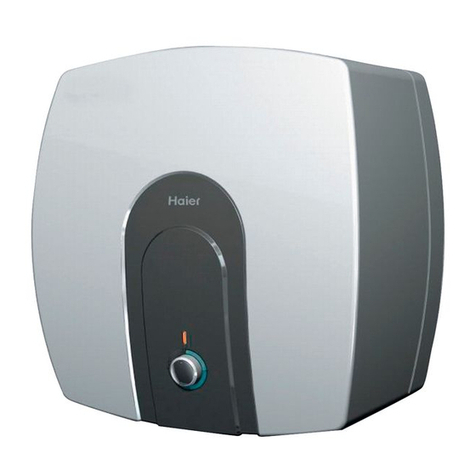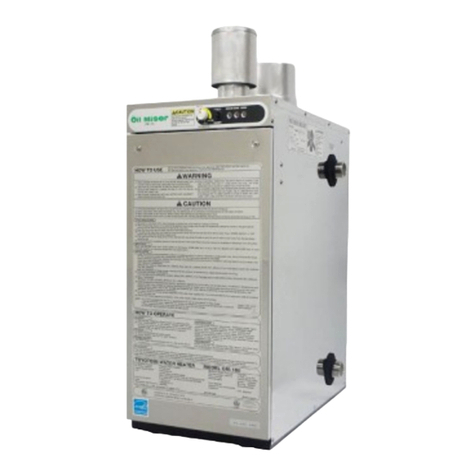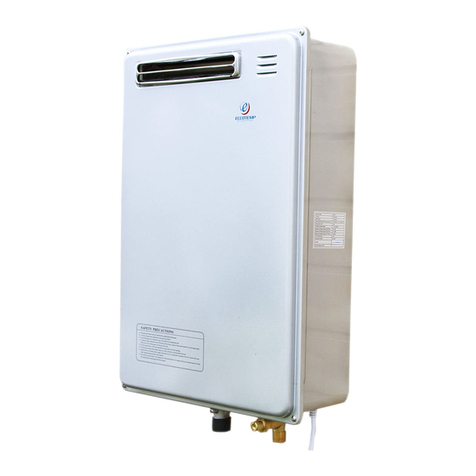
ring (24), shouldered washer (25), and jam nut
(23) over upper stem. Tighten jam nut after
positioning diaphragm holes over lower
diaphragm case (6) holes.
14. Install upper case (27) and position over
diaphragm holes. Make sure diaphragm lays flat
on flange and is not pinched or twisted. Fasten
bolts (5) and nuts (4) sequentially across from
each other until tight.
MAINTENANCE OF SYSTEM
COMPONENTS HEAT EXCHANGER
Check tightness of all casing bolts and nuts (80 to 90 ft-lb)
after unit has been in operation for a few hours and again
in twenty-four hours.
DISASSEMBLY
1. Disconnect water piping.
2. Remove all nuts around casing.
3. Remove casing from base plate.
4. Remove manifold nuts and lock rings. Coil
manifold and manifold gaskets.
ASSEMBLY
Clean all parts and replace any damaged parts. Use new
gaskets.
5. Install manifold gaskets between manifold collar
and base plate. Insert coil manifolds into base
plate.
6. Place lock rings over manifold ends with locks
fitted into slots. Install manifold nuts and tighten
securely. (A light coating of thread lubricant
should be used on manifold threads before
assembly of nuts.)
7. Place casing gasket on base plate and follow with
casing. Make sure recesses inside casing line up
with top of manifolds.
8. Install nuts and bolts and tighten evenly to assure
a tight leakproof seal.
9. Reinstall water piping.
10. Vent steam side of heater as described under
Section II - Start-up Procedure.
SECTION IV - TROUBLE SHOOTING
GUIDE
IMPORTANT! Study installation drawings and
CAREFULLY read the details concerning
installation of your Heater and Trapping System.
Following these recommendations will insure that
you obtain the maximum efficiency from your
CONSTANTEMP HEATER.
Recirculating Systems
PROBLEM: EXCESSIVE RISE IN WATER
TEMPERATURE OCCURRING DURING OR AFTER
PROLONGED PERIODS WHEN NO WATER IS BEING
USED FROM HEATER AND A RECIRCULATING
SYSTEM IS PROVIDED.
Too much water being re-circulated through
heater. Reduce water flow through heater by
throttling re-circulation stop valve to allow
enough time for water in piping system to
cool and assume new temperature setting. If
piping system is extensive and contains a
large volume of water, then the readjustment
of temperature can be speeded up by closing
steam supply stop valve to heat exchanger
and by then opening faucets etc. Preferably,
at end of loop until water temperature drops a
few degrees below the heaters adjusted water
temperature. Close off the re-circulation stop
valve and open the steam stop valve to
heater. With re-circulating pump in
operation, open re-circulation stop valve in
small increments while allowing adequate
time for water to be re-circulated throughout
piping before proceeding to next increment
of adjustment. Continue until desired re-
circulation water temperature is achieved.
1. IF A THREE-WAY THERMOSTATIC VALVE
IS USED, the port connected to the heaters cold
water supply MUST CLOSE to prevent excessive
flow of water back to heater. An excessive flow
will cause water temperature in piping to rise
above adjusted temperature setting of heater. If
port does not close, check for dirt or obstruction
between seating surfaces, or for damaged element
or seals.
2. CHECKING FOR FAULTY ELEMENT,
immerse unit in an agitated bath of hot water.
With a rise in water temperature of from 10 to
12¼F above rated operating range of element, the
port connected to heaters cold water supply pipe
should be replaced.
CHECK OPERATING RANGE OF ELEMENT
MAKING SURE RANGE IS THAT NEEDED
FOR YOUR SYSTEM.
1. NOTE: Operating range of Thermostatic Valve
should normally be from 10 to 15
0
F lower than
that of Heaters adjusted water operating
temperature. If heater is adjusted for 140
0
F hot
water and a 110
0
F 3-way valve is used, the re-




